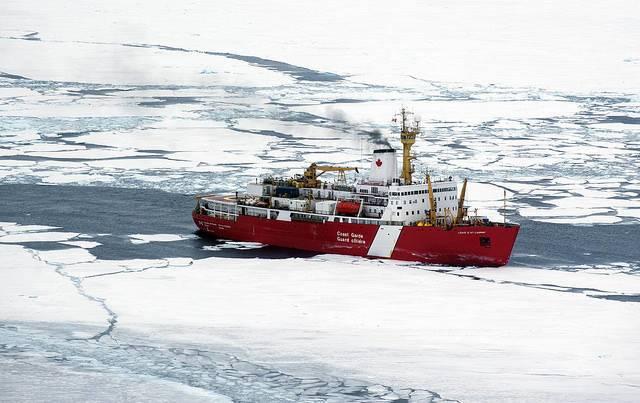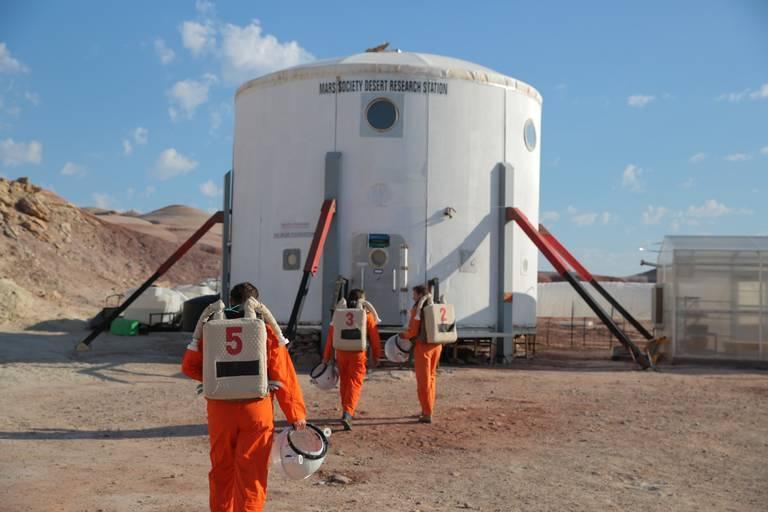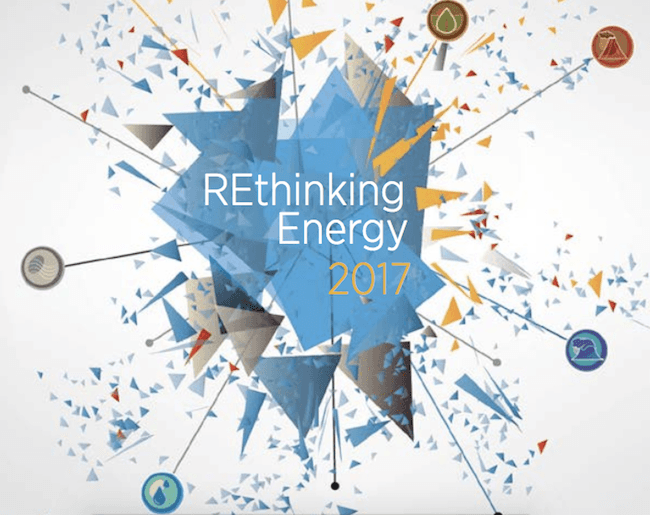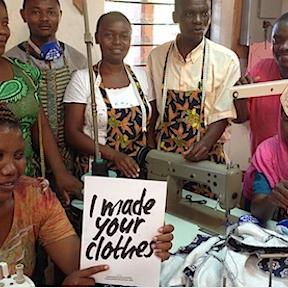Kimberly-Clark and WWF Launch Branding Partnership to Halt Deforestation


This week, the personal care company Kimberly-Clark and World Wildlife Fund (WWF) announced a campaign designed to raise consumer awareness about the benefits of sustainable forestry and risks of deforestation. The launch of this initiative caps an eight-year relationship between the Dallas area-based consumer packaged goods (CPG) giant and one of the world’s largest conservation organizations.
Beginning this month, retailers and consumers will see the famous WWF panda logo on Scott-branded paper towels. Additional brands that will sport this logo include Kleenex, Viva and Cottonelle. These paper towel, facial tissue and toilet paper brands are already certified to Forest Stewardship Council (FSC) standards.
Kimberly-Clark has long claimed that it has been a sustainability leader within the pulp and paper products sector. In 2003, it started to require third-party fiber certification from companies within its supply chain. Three years later, it began developing a closer working relationship with FSC. WWF then came on board as another non-profit partner of Kimberly-Clark’s when the company joined the Global Forest and Trade Network.
“We are proud that environmental groups, such as WWF and FSC, recognize us as a market leader for responsible fiber sourcing and forest protection,” wrote a Kimberly-Clark spokesperson via an email exchange with TriplePundit. “We are also proud that our leadership has moved other manufacturers in our industry toward higher levels of certification.”
CPG companies, including Kimberly-Clark, have long struggled with meeting consumers’ expectations that these companies become more sustainable, while their shopping behavior has indicated that they are often unwilling to pay a premium for such goods. The trick for the industry has been to scale sustainable forestry in order to keep costs down yet meet the increased demand for sustainable wood fiber. On that point, one of the company’s main pulp and paper products competitors, Procter & Gamble, has worked with its suppliers and conservation groups to increase the acreage of sustainable forests across the U.S. South, from the Carolinas to states along the southern Mississippi River.
To that end, as part of this alignment with WWF, Kimberly-Clark has promised to commit $4 million in order to further the NGO’s global efforts to conserve the world’s forests. The exact allocation of funds has not yet been announced, but a Kimberly-Clark spokesperson told 3p that the Southeast region of the U.S., often described as “the world’s wood basket” is an important area of focus for both WWF and Kimberly-Clark, and this region will be included in WWF’s continued forest conservation work.
According to Kimberly-Clark, this latest development will strengthen the relationship it has with WWF and other environmental groups. “As one of the world’s largest buyers of market pulp, Kimberly-Clark knows that protecting our forests is critical to addressing climate change, conserving terrestrial biodiversity and ensuring a healthy supply chain,” explained a company spokesperson.
One of WWF’s long-term goals is to ensure Zero Net Deforestation and Forest Degradation (ZNDD) as standard practice for the world’s forests by 2020. “WWF knows it cannot achieve this goal alone, so it works with numerous sectors to do so,” wrote Kimberly-Clark’s representative to 3p. “One is the business sector, especially businesses that source materials, such as wood, pulp and rubber, from forests to create their products.”
In turn, WWF’s forestry experts work closely with these companies, including Kimberly-Clark, to develop more responsible sourcing policies, identify and mitigate sourcing risks and share best practices that can be applied to other companies and industries.
This work with WWF is one important component of Kimberly-Clark’s sustainability strategy. In addition to the commitment to harness innovation in order to reduce its paper products’ overall impact on forests, the company says it has four additional goals it seeks to achieve by 2022. Such efforts include additional improvement of social and environmental impacts across its supply chain; expand its zero-waste and recycling performance; reduce its greenhouse gas emissions 20 percent from its 2005 baseline levels; and improve the well-being of 25 million citizens worldwide over the next five years.
Image credits: Kimberley Clark
Climate Change Research Trip Cancelled -- Too Risky In Warm Weather


It was supposed to be a landmark study that would help narrow down the true effects of climate change on the Arctic and northern communities. But this week scientists aboard the Canadian Coast Guard Service icebreaker Amundsen announced that the study was being cancelled because climate change was making the trip too perilous to undertake.
The $17 million, 4-year project was due to start the first leg of its study at the end of May, with a 133-day journey across Canada's Hudson Bay. The 40-member team comprising scientists from four Canadian universities were due to take ice samples and study the impacts of global warming on Arctic ecosystems and communities.
But the team quickly found its mission diverted when it started picking up distress calls from boats and passenger ferries stranded in Arctic ice floes. Because the CCGS Amundsen is equipped for heavy ice conditions, the vessel was rerouted to help rescue boats that were taking on water and unable to navigate through the ice, forcing the ship to delay its research.
"The requirements for search and rescue trumped the requirements for science," said David Barber, the lead scientist for the University of Manitoba research project, who admitted that "the search and rescue calls were coming in fast and furious."
Barber, said the severe ice conditions in the Atlantic and Hudson Bay meant the Amundsen wouldn't make its critical schedule this year despite having left Quebec City almost a week earlier than planned.
"Considering the severe ice conditions and the increasing demand for Search And Rescue operations (SAR) and ice escort, we decided to cancel the BaySys mission," Barber said.
Fishing vessels off the eastern coast of Canada have found themselves stranded unexpectedly in ice floes that scientists thought were the result of thinning icebergs that the Coast Guard sees each year. But samples of the drifting ice that the scientists were able to take in a strait off the coast of Labrador suggest something different: The ice is actually from much farther up in the Arctic, from areas not usually seen in drifting ice floes.
""This is the first time we've actually seen ice from the High Arctic," Barber said, who said that the condition was "very much a climate change phenomena."
The team pointed out that not everything was lost with having to cancel the first leg of the trip: By the time the ship had concluded its search and rescue missions the scientists had amassed an entirely new dataset on the migrating ice and environmental conditions in which they were found. The information will help scientists decide how best to help coastal communities prepare for worsening climate change.
Barber said the scientists hope to resume the research with the second leg of the BaySys project in early July.
Flickr Images: Office of Naval Research; NOAA Photo Library
Ikea (Almost) Goes to Mars


No matter how you feel about Ikea, you have to give this outlandish company credit. Over the years, the housewares and furniture giant out of Sweden has made a mint out of a kooky business model. Start with the furniture, which features long names that look like words you have gleaned from Ingmar Bergman’s Scenes of a Marriage. Then, make your customers walk a long, rambling endless path amongst all this furniture that is so exhausting, they will finally dine at the store’s cafeteria on Swedish meatballs. Maybe they will even pick up a jar of lingonberry syrup or salmon paste in a tube on the way out. The store’s shtick has been a rousing success, and as we have long documented here at TriplePundit, Ikea has made plenty of impressive sustainability and social responsibility decisions over the years.
And in the company’s latest odd-yet-brilliant move, Ikea recently announced that some of its designers were isolated at the Mars Desert Research Station in Utah.
According to a recent blog post, these designers joined a NASA space architect for a few days to explore how a future Mars habitat can inspire our future domestic lives. No, this is not some public relations stunt in case someone like Matt Damon in The Martian decides to make the red planet home. The reality is that according to the United Nations, the world will most likely have 41 mega-cities with 10 million or more residents. Life in these cities will be one confined to small spaces while resources, including clean air and water, will be at a premium. Therefore, if these Ikea designers are crammed in a tiny space, the logic follows that they could work together to find new ideas that can make our future homes far more comfortable and sustainable.
Ikea is onto something here. Even here in the U.S., where big homes have long been the ideal and the norm, there has been a slow shift in where and how Americans decide to live. As Dan Kopf of Quartz pointed out last month, the single-family home in the U.S. is on a slight, but noticeable, decline. Part of the change is that the construction industry lost a lot of capacity as many building contractors left the field during the financial crises of a decade ago.
But in many metropolitan areas, land is simply too expensive, or space is too constricted, to build the 1950s-era suburban tracts that lured families into the suburbs for decades after World War II. Meanwhile, there has been a return to the cities, where even brownfield sites are not large enough to host the spacious housing plots of yesteryear. Baby boomers, who helped fuel the move to the suburbs and exurbs, are also part of this trend as their kids leave for college and they decide to downsize with retirement on the horizon. Add the growing pressures on the global environment, and there are plenty of reasons why companies like Ikea need to explore how to stay viable in a far different future where the vast majority of us will have to live comfortably, and do so with fewer resources.
Ikea announced the experiment in this remote corner of Utah at last week’s “Democratic Design Days,” a company-wide event where various ideas and collaborations are explored. The event explored a range of options, from incorporating the sense of smell into design to an augmented reality partnership with Apple.
Image credit: IKEA
Best Ways to Speed Up Renewable Energy Investment Globally


One strong theme to emerge in the transition to a low carbon economy is that companies are now eager to access renewable energy as a bottom line consideration. That should help rev up decarbonization to an optimal speed -- that is, a pace that meets the threshold needed to avoid catastrophic climate change. However, most countries still lack a policy framework that provides companies with an efficient pathway to access renewables.
Fortunately, help is on the way. IRENA (the International Renewable Energy Agency) has just launched a new first-of-its-kind survey project called the REmade Index. The idea is to assemble a database of best practices and models for any and all businesses that have purchased renewable energy. The survey includes companies of any size, so it provides a great opportunity for small business owners and managers to lend their experiences to the global effort.
What's the renewable energy problem?
To the casual observer, the pace of renewable energy adoption may seem strong. Wind, solar and other low or zero emission energy technologies have been experiencing a years-long trend of explosive growth, and costs keep dropping.
However, climate experts and other researchers are concerned that the current rate of investment in clean power is not fast enough to meet the Paris Agreement goal of limiting global warming to 2 degrees centigrade.
According to IRENA, the average annual investment in clean power should be at around the mark of $900 billion. With that kind of financial muscle behind it, the share clean power in global energy should top 35 percent by 2030, about double what it is now.
That's a tall order considering that total clean power investments in 2015 barely scraped past $300 billion.
The low falling cost of wind and solar is helping, but investors need more predictability and reliability in order to ramp up the pace of change.
IRENA highlights Google as one example of a company that is fully on board with renewables, and yet is unable to purchase all that it could:
"Since our first power purchase agreement in 2010, Google has signed 20 different renewable energy purchasing deals in 5 countries totaling 2.6 GW. However, we're not yet able to purchase renewable energy everywhere we have significant operations, as we are limited by policy and regulatory hurdles in some markets," said Michael Terrell, Head of Energy Policy at Google."
A 2014 IRENA financial survey has identified a set of factors that would make clean power more attractive to investors. These include standardization and aggregation of smaller projects as well as developing new financial instruments that streamline loans and reduce risks for investors.
Reducing risks for small scale investors is also extremely important, as highlighted by the case of American Solar Direct.
What business can bring to the table
The competitive cost of renewables has motivated a sea change in the way companies look at energy sourcing. Clean power is now clearly a bottom line issue for business, according to IRENA Director-General Adnan Z. Amin, over and above any environmental concerns. Long term price stability, reliability of supply, community relations all come into play.
As the coal industry gradually loses its grip on power generation, renewables also enable companies to project the kind of contemporary identity that attracts -- and holds -- new clients and customers.
The REmade Index is designed to leverage this new approach to energy sourcing. It will highlight companies that have made great strides in voluntary renewable energy sourcing, pick out emerging trends, and develop recommendations to help lift other companies along.
As any marketing professional can attest, the key challenge is to get the message out in a form that encourages energy consumers to act. Amin anticipates that the REmade Index will help accomplish that by highlighting the bottom line benefits in the real world:
“These achievements from companies around the world are only the beginning of what companies can do to help accelerate the energy transition. As this trend continues, global interest in identifying and removing market barriers and sharing best practices, both in the public and private sectors, will only grow. By mapping out global efforts and potential for corporate sourcing in decarbonizing the global energy mix, the REmade Index is designed to do just that."
Findings from the REmade corporate survey will dovetail with an earlier IRENA survey designed to help nations develop more effective frameworks to speed up investment in renewable energy by the private sector.
The REmade Index also supports the Clean Energy Ministerial’s Corporate Sourcing of Renewables Campaign, and is supported is by the IRENA Coalition for Action.
Business helping business on the path to renewable energy
The historic decarbonization of the global economy encompasses many story lines, and the new REmade Index illustrates one of the many ways in which businesses are voluntarily collaborating with other businesses -- and even their own competitors -- to stimulate investment in low carbon technology.
Innumerable consortia and public-private partnerships have cropped up to smooth the path to solar, wind, low emission vehicles and other clean technologies. One recent example is a new fuel cell truck demonstration involving UPS, the Department of Energy and other commercial and research partners. If it proves successful, many other fleet owners stand to benefit from the switch to cleaner vehicles.
Another recent example is a collaboration between the real estate industry and Lawrence Berkeley National Laboratory to add standardized rooftop solar details to information included in real estate multiple listing services. It launched in California earlier this year and eventually it could be shared by 700 services around the country.
The project is expected to motivate more home owners to install rooftop solar because it adds value upon resale, so the whole solar supply chain benefits from the new addition to the listing services.
In another type of collaboration, last February Honda and GM teamed up to launch an $85 million fuel cell manufacturing facility in Michigan.
Companies are also licensing or outright sharing their clean tech patents. Examples here include several of Ford's electric vehicle patents, and thousands of Toyota fuel cell patents.
Some of the most interesting collaborations involve high tech startups teaming up with legacy companies, such as the new partnership between Ryder and the fuel cell truck company Nikola.
So...how can you help?
Somewhat lost in all this activity is the opportunity for small and mid-sized companies to help steer the global decarbonization ship.
Typically, smaller companies are perceived only as customers for clean energy technology. The REmade corporate survey gives them a chance, no matter how small they are, to drive change beyond their four walls, add their knowledge and experience to help develop more efficient platforms for renewable energy investment.
In addition to basic corporate details, the survey includes open ended questions about the company's renewable energy goals and its strategy for getting there.
Businesses also have the opportunity to weigh in for their preferred options in terms of financing and sources.
The survey covers a wide swath of territory. It includes any business, anywhere in the world that uses electricity, heating and cooling, and transportation.
Companies that are aiming to access less than 100 percent renewables are just as welcome to contribute to the survey as are those that have 100 percent in their sights.
Companies that are leaning on renewable energy credits can also contribute, along with those using power purchase agreements, direct investments or some other arrangement.
To access the REmade survey visit IRENA online at coalition.irena.org.
Image (screenshot): via IRENA.
Businesses Move from “License to Operate” to “License to Thrive”


By Elliott Wall
After the announcement of the United States’ intention to withdraw from the Paris Agreement, a coalition of mayors, governors, universities, and businesses pledged their commitment to stand by the agreement regardless of America’s withdrawal. The commitment of over 900 businesses in the We Are Still In movement illustrates the increasingly important role companies play in addressing social and environmental challenges. The ownership of this responsibility is furthering a shift away from 'license to operate,' in which companies seek the passive acceptance of communities, toward 'license to thrive,' where companies more actively partner with communities to address critical challenges. At the local level, this approach requires more dynamic engagement, but when done well, it can establish businesses as essential community partners and contribute to the long-term success of both companies and communities.
A Different Type of Operating License
The term “Social License to Operate” is commonly used to describe communities’ and key stakeholders’ acceptance of a company and its operations. The 'license to operate' is not a tangible certificate but rather an informal and unspoken social contract between a company and the communities it impacts. The insight underlying this term is that, without the tacit approval of communities, businesses risk being rejected or forced out and cannot operate profitably in the long run.
The challenge with intangible social contracts is that they are ambiguous and vary across stakeholder groups. Communities are diverse and driving consensus around priority needs can be difficult. This is why strategic, sustained engagement is essential. Just as financial institutions employ rigorous “know your customer” processes to understand customers and manage risks, businesses must set in place “know your stakeholder” systems to identify, engage, and understand what’s important to key community stakeholders. Doing so can not only enable companies to get out in front of potential conflicts but can also surface valuable opportunities to support both corporate and community interests over the long-term.
Public expectations of such engagement are growing, as businesses are increasingly viewed as integral components of communities. Complementing the We Are Still In movement, an independent study sponsored by APCO, a public relations firm, of consumers across 15 global markets found that 77 percent of respondents believe that corporations have a bigger impact on their lives than they did a decade ago. Further, half of those surveyed indicated that companies have more influence on their lives than government, with 60 percent maintaining that companies serve roles previously filled exclusively by government. As companies expand and reach more people, they have an opportunity to demonstrate their societal value-add beyond just fulfilling commercial need.
Pioneering the License to Thrive
Acting on the opportunities to contribute to society requires a more proactive community engagement approach that underpins a detailed understanding of community needs. Ambuja Cements Ltd., India’s top cement manufacturing company, is among the leading firms pioneering the license to thrive – and benefitting as a result. When the now-$1.2 billion company started in the 1980s, it quickly realized that communities can be skeptical of cement manufacturing plants opening in their backyards. Understanding the company’s potential to support the communities surrounding their plants, Ambuja launched the Ambuja Foundation to implement a thoughtful approach to community engagement.
Crucially, Ambuja’s approach allocates a significant amount of time to relationship building. Seven to eight months prior to breaking ground on a new plant, Ambuja deputes Foundation staff to connect with community stakeholders, understand their priorities, and seek their partnership in a shared development agenda. They do so by identifying areas where community members congregate (by water stations, for example) and engaging in informal conversations to understand the community from the ground up. The upfront time spent building positive relationships provides Ambuja with a holistic understanding of the community and surfaces opportunities for the company to play a supportive role. And by building trust and demonstrating their commitment to the community, Ambuja’s business presence is encouraged by local stakeholders. During legally-mandated public hearings, community members often write letters and speak out in support of the business.
Ambuja Cement’s Community Support Model (LINK)
Obtaining the License to Thrive As the work of Ambuja Cement illustrates, obtaining the license to thrive requires committed engagement and the strategic commitment of corporate resources. For communities to truly get behind a company, they must establish trust. This is achieved only after stakeholders understand the company and have confidence in its ability to support local interests. Likewise, companies can optimize their contribution only after taking the time to sincerely understand local priorities and deploying their resources in the most impactful manner.
When the appropriate steps are taken, the results can be meaningful for both parties. 'License to thrive' enables companies to meaningfully support communities while building a positive rapport that benefits the business. And with communities increasingly looking to companies to serve as partners in addressing critical challenges, this model is more important than ever. Leading companies must appreciate their unique role in society, engage actively, and work with communities to help them prosper.
Elliott Wall is a Senior Analyst with The Synergos Institute
M&S to tackle unemployment, skills shortage, and poverty around the UK


Global apparel industry takes steps toward better performance


UN Shares Frank Updates on the Sustainable Development Goals


Last week, the United Nations released its second progress report on its 17 Sustainable Development Goals, or SDGs. Refreshingly, there is no flowing language; in addition, the report does not excessively hype goals that are finding success, nor does it attempt to sweep any shortcomings under the rug. The 19-page overview is frank and matter-of-fact, full of statistics that arouse hope, worry and of course, more questions, at the same time.
For companies and non-profits that have considered, or already committed, to working on these 17 SDGs, the document offers a good idea where additional heft and assistance are needed. And for governments, the clarion call is clear: two years into this initiative, more data and statistics are needed in order to gauge where progress is being made, and where more investment in human capital is desperately needed.
The good news is that poverty (SDG Goal #1) is falling rapidly, though there is a long road ahead if poverty is to be eradicated by 2030. In 1999, 1.7 billion people were living below the international poverty line, which currently stands at $1.90 (per day per person.) As of 2013, the number living below the poverty line has fallen to 767 million citizens. More recent data indicates that last year, just under 10 percent of the world’s workers were earning under $1.90, which is a sharp improvement from 28 percent back in 2000. Climate change, however, imposes plenty of risks on those who still live under that minimum daily wage, or are still perilously close to falling back into that demographic group. The UN insists that resilience plans designed to minimize the impacts of natural disasters become a core strategy for governments worldwide. Economic losses from natural disasters have soared as high as $300 billion annually, and the bulk of that damage keeps occurring in low- and middle-income countries.
Tied to poverty is hunger and food security (SDG Goal #2). Again, the mantra is one of overall long-term improvement, with several caveats that provoke concern. As of 2016, the proportion of people worldwide who suffer from malnutrition has fallen from 15 percent in 2002 to 11 percent in 2016. But that still leaves 793 million people who struggle to have enough to eat day-to-day. Meanwhile, governments are not necessarily getting a bang for their buck when it comes to their agricultural investments. The global agriculture orientation index, which the UN defines as government expenditures in agriculture divided by that sector’s share of gross domestic product (GDP), has fallen by 0.38 in 2001 to 0.21 in 2015. And in the world’s poorest countries, the convergence of volatile fuel prices, extreme weather, a decline in agricultural production and currency depreciation resulted in 21 nations enduring moderate or high price increases in food last year – and 13 of those countries are located in sub-Saharan Africa.
But if poverty, along with its symptoms and causes such as hunger and water scarcity (SDG Goal #5) are to end, then gender inequality must cease – and this is where the UN report signals that the world is in dire need of improvement. The lack of reliable statistics on this front also suggests that more women and girls struggle economically and emotionally day-to-day than what the UN currently suggests. Indeed, there has been a reduction in a range of practices such as genital mutilation and child marriage. But over the course of a decade, 19 percent of women surveyed in 87 nations reported that they had experienced physical or sexual violence by an intimate partner. Ending all forms of discrimination and violence against women and girls will prove to be a stubborn uphill climb. One answer would be to have more women involved in government and business: but women in lower houses of national parliaments or congresses has only reached 23.4 percent this year, only a 10-percentage point increase from 2000. The private sector is performing marginally better, with fewer than one in three women holding middle- or senior-management positions.
When looking at the rest of the SDGs, the results are certainly mixed. Despite a surge in deforestation in countries such as Brazil, worldwide forest loss has been on the decline, while sustainable forestry efforts have helped to make a difference. And while 90 percent of the world’s population now has access to improved drinking water sources, there will be plenty of sleepless nights in the future as 2 billion people live in countries the UN describes as having “excess water stress.”
The challenge the UN faces in meeting these goals is that overall data is scarce. For example, the rise of the global middle class has contributed to overall resource consumption, from an increase of 1.51 kg in 2000 to 1.73 in 2010 – most likely that number is far higher. Urbanization is reportedly at 54 percent globally, but considering how many of the world’s nations rely on estimates instead of reliable data, many of the UN’s statistics were most likely outdated before they were even released.
The report is akin to driving along a road in pitch black darkness without headlights – we really cannot find a way to ensure a sustainable future if we lack decent data from the past. And this is where the private sector can step in – not only can it contribute technologies that can help governments understand how their citizens are performing, but it can also implement programs that can help make this world an even better one in which to live – and even profit from their efforts as they develop responsible supply chains and products that improve the quality of life across the globe.
Nevertheless, businesses and governments need inspiration, too: the report could have been even stronger if case studies highlighting improvements in labor, equality, the environment and justice were included.
Image credit: United Nations/Flickr
Santa Barbara Pledges Transition to 100 Percent Clean Power


This city of 92,000 on California's central coast is known worldwide for its idyllic vibe, spectacular scenery, white stucco buildings and of course, an NBC soap opera, but now Santa Barbara has a new claim: the 30th U.S. city to commit to generating 100 percent of its electricity from renewables.
After a city council vote last week, Santa Barbara's municipal government has pledged that half of the electricity required to power city-owned buildings and operations will be sourced from clean energy sources. The city promised that 100 percent of its power needs will be met by renewables by 2030.
According to the United Nations’ Climate Action program, Santa Barbara will join a roster of U.S. cities that includes Atlanta, Madison, Pittsburgh, San Diego and San Jose. Other municipalities have made promises to power their cities with 100 percent renewables in the future without committing to a deadline, including Columbia, South Carolina.
The news was welcomed by local environmental groups, including Santa Barbara’s Sierra Club chapter, which for several years has pushed the city and surrounding county to establish more aggressive renewable energy goals.
Santa Barbara’s energy goals are certainly laudable but will face several hurdles. As with the case with many California municipalities, the launch of such projects will require the sign-off of several government entities. Land along California’s central coast, as is the case with much of the Golden State, comes at a premium, if it can even be developed at all. Moving along on plans such as the construction of solar installations or wind power farms will require cooperation with Santa Barbara County officials. In addition, Santa Barbara's recent decision to reactivate its desalination plant will complicate its 100 percent renewables goal, as this method of generating drinking water is highly energy-intensive. Furthermore, the California Coastal Commission, which has jurisdiction over much of the state’s shoreline, may need to give approval in order to green light new energy infrastructure proposals depending on their location.
As city officials draw out an execution plan, Santa Barbara will benefit from being in a state that is currently steered, and after 2018, most likely will be led, by a governor that will go out of his or way to become the anti-Trump on environmental and energy issues. As for the current White House’s perceived war against climate science, Governor Jerry Brown has made numerous declarations since last November's election, among them that the state will launch its “own damn satellite” if tracking climate change science ever runs into even more hurdles. Last week Gov. Brown went further with California's climate action plan, while sticking his thumb in President Trump's eye, with his announcement that the state signed its own climate deal with China.
Nevertheless, there is more to Santa Barbara's renewables commitment and climate action plan than politics. The city has had a long and uncomfortable history with fossil fuels. Last year's spill of 143,000 gallons of crude oil near the city's shores brought back memories of the devastating 1969 oil spill, which in part sparked the emergence of the modern environmental movement, and changed the course of oil and gas exploration off of California's coast forever.
Image credit: Konrad Summers/Flickr
Google's Interactive Website Explains Syrian Refugee Crisis


By Scott Huntington
Although Google got its start as a search engine, the brand has expanded to provide information to users in other ways. For example, Google Maps gives point-to-point directions to destinations for drivers, pedestrians and people who prefer to use public transit. Google News is a hub that allows people to review the top headlines or learn about trending topics at a glance.
Recently, the brand set out to disperse essential information about a hot-button topic: The Syrian refugee crisis. Google is making this happen via a purposeful website that gives information beyond what’s typically offered in headlines or short articles.
Giving Users Answers to Pressing Questions
The search engine's ability to accurately respond to questions is Google’s specialty. As most Google users know, if you simply start typing a question into the search engine, a drop-down list suggests possible ways to complete your phrase based on what other people have searched for.
Representatives from Google created the website, which is called Searching for Syria, in partnership with the UN High Commissioner for Refugees (UNHCR).
The goal of the site is to address five common questions about the Syrian refugee crisis using combined information from Google and the UNHCR:
- Who is a refugee?
- Where are the Syrian refugees going?
- What was Syria like before the war?
- What is happening in Syria?
- How can I help Syrian refugees?
By partnering with the UN, Google can insure searchers receive the best information about a difficult and complicated subject.
Equipping People to Assist in Practical Ways
The last question on the list has been on the minds of many since the Syrian crisis began dominating headlines. Potential approaches to helping include donating portions of personal earnings to Syrians who can no longer work, supporting medical teams who are working in the country and even signing up to translate for refugees. Fittingly, the newly launched Google site has a feature that allows people to donate money online.
Offering Notable Perspectives About the Scope of the Crisis
Even when people are genuinely interested in what is going on outside their homelands, it can be extremely hard for them to grasp the details. The magnitude of how Syrians are suffering and the various factors that have caused them to flee can be overwhelming. However, the Searching for Syria site has features that make the devastation more relatable for people, no matter where they live.
The events in Syria have been going on for six years and have caused significant disruptions to all the country's citizens. To illustrate that, the Google site features before-and-after Google Earth images that show Syrian sites before the crisis in comparison to today.
There are also first-hand accounts from people who have been affected by the ongoing tragedy. It’s one thing to hear reports from journalists about how everyday life for Syrian residents has changed, but personal details from those who have lived through the situation might give outsiders a deeper understanding of the situation’s severity.
The Searching for Syria website is on the Google homepage of select countries. If you have access to it, browsing the content could help you think differently about the refugee crisis, or at least expand your existing knowledge.
Image credit: UK Department for International Development, Flickr CC